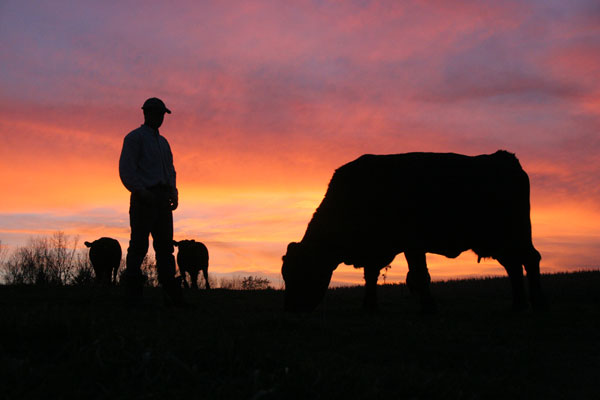Getting started as a rancher isn’t easy. Here are some tips to help.
May 1, 2019

As a result of my writing I get a lot of emails. Recently, several have asked how I would recommend they get started in the ranching business.
I grew up as part of the third generation in a reasonably well-established family ranch. The ranch was split up between four brothers while I was away at college. One brother stepped away and my father bought most or all of his interest.
It still left my father with a ranch barely large enough for one large family. I was the oldest of 10 children and my five brothers were still in high school or college at the time. We were on our own for college, but the ranch did provide reasonably good paying jobs for us when out of school for summer breaks.
Since my brothers still needed those summer jobs and were available on non-school days, I saw no opportunity back home at the time. Thus, I was glad that I had chosen ag economics with an emphasis in farm and ranch management for my master’s degree.
A little later, when there might have been an opportunity to go back, I discovered (what I should have already known) that my father and I were both pretty strong willed and had some significantly different ranch management ideas and that my wife was not very enthused about working with family, living in a small country town and taking a reduction in salary.
Facing those realities, I became a dedicated life-long learner and worked very hard at becoming a good ranch manager. About at that time, I entered into a partnership with a gentleman from the finance world, and we, along with a number of investors bought a ranch. We were grossly undercapitalized and ended up losing our respective equities in the ranch.
While it wasn’t fun, I learned a lot of lessons from that experience. Among them were:
Don’t buy ranch land without a very strong equity position. Land has become a store of wealth for many investors including farmers and ranchers. This has driven the price of land almost continually upward.
Investors consider land value appreciation as part of their return, knowing that the operating rate of return to expensive land is usually quite small—perhaps 0 to 4%. If it’s less than that, you don’t buy.
Well-managed operations placed on high-priced ranch land can very well pay for the costs of operating the ranch, but cannot pay for high land debt and interest in addition.
It is much less expensive to irrigate with water that runs downhill (flood or gravity flow pressure) than with water running uphill (pumped).
Fed feed is much more expensive than grazed feed. That has been reconfirmed throughout the rest of my career. So, don’t start a ranching career where a lot of feeding is required. This might mean a different location or summer stockers rather than cow-calf pairs.
Those mistakes show that I am not an expert in how to get started in the ranching business. However, I think I have learned some lessons that apply to a beginner today.
First, I have been in the ranching business almost my entire career. I was not the business owner, but the business was financially rewarding for the business owner and for me.
Young people should be willing to consider the option of managing for others. Get qualified with a good education, internships and real world experience and find the right owner to work with.
People who have started their own successful businesses have many of the following in common:
Day jobs to provide for family living and insurance. Sometimes, household income from the day jobs is sufficient to provide some funding to increase the size of a ranching enterprise. However, operations should pay their own way. New investment funds should be used strictly for that and not to subsidize operations.
They almost always start with leased property and find very good rental rates. Sometimes they convinced the landowner that they will fix up, improve and take excellent care of the land. And they did that.
Some find opportunities to partner with older owners who have no family members with interest in ranching.
They have the very bare minimum of overheads—machinery, equipment, facilities and tools—just enough to get the work done efficiently. This is a must for the beginner.
They very often stack enterprises—adding sheep or goats to cattle, adding pastured poultry or bees, etc. They then work on marketing—looking for opportunities to sell every product to its highest and best use and getting as close to the end consumer as possible.
They often don’t get college degrees, but get very well educated for what they are trying to do. In fact, if someone really knows this is what they want to do, I would not recommend a degree—just some well-selected courses and some on-the-job training or internships.
Successful new ranchers think, learn and work.
Teichert, a consultant on strategic planning for ranches, retired in 2010 as vice president and general manager of AgReserves, Inc. He resides in Orem, Utah. Contact him at [email protected].
About the Author(s)
You May Also Like



